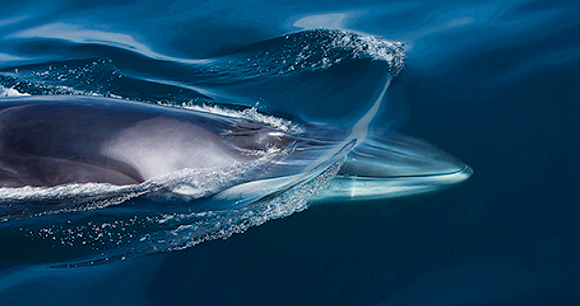
Commercial whaling (distinguished from ASW by its participants, purpose, scale, and techniques) began in the 11th century with the Basque inhabitants of the French and Spanish coastlines of the Bay of Biscay. In the ensuing centuries, as they depleted local populations of whales, starting with right whales, Basque efforts expanded north, influencing other nations in northern Europe and eventually North America to begin their own whaling operations. Great Britain started hunting bowhead whales around the North American colonies in 1611 and American colonists began whaling (a practice known as Yankee whaling) out of Nantucket, Massachusetts, in 1712.
Through the 18th and 19th centuries, whaling was driven by demand not for meat, but for whale oil, which literally lit the lamps and greased the wheels of the industrial revolution. Other whale products also held value, including ambergris (a stomach excretion of sperm whales used as a perfume fixative) and baleen (most famously used to stiffen womens’ corsets).
As whaling ships became faster (with the advent of steam vessels) and larger, whaling became both more efficient and more competitive, with whaling nations establishing remote land stations and deploying factory ships that could spend months at sea processing whale oil on board. By the 20th century, industrial-scale commercial whaling had begun to target whales on their feeding grounds in the Antarctic, decimating whale populations. Scientists estimate that 2.9 million whales were killed between 1900 and 1999 and many species suffered catastrophic declines. Some populations, including the North Atlantic gray whale, were lost forever. Others, such as the North Atlantic right whale, number in the low hundreds even after decades of protection.
The major industrial whaling nations of the early 20th century included Great Britain, the United States, Norway, the Netherlands, Japan, Germany, and the Soviet Union, but whalers from Australia and Brazil also had a significant presence in the southern hemisphere. As whale populations began to dramatically decline, governments started to recognize the importance of “managing” whaling and conserving whale stocks, not just for future human generations but also for their own sake.
Early attempts at regulating whaling fell short as Japan and other leading whaling nations refused to participate. In 1946, however, shortly after the close of the Second World War, governments of the main whaling nations came together to negotiate the International Convention for the Regulation of Whaling (ICRW), recognizing the “interest of the nations of the world in safeguarding for future generations the great natural resources represented by the whale stocks.” The ICRW established the International Whaling Commission (IWC) whose (then) 15 member nations (known as contracting governments) were authorized to adopt, by three-quarters majority vote, binding regulations on catch limits, whaling methods, protected areas, when whaling was permitted, and what species (including minimum sizes) could be killed.
While this system brought some measure of control to ongoing commercial whaling operations and offered respite for some of the most threatened species, commercial whaling largely continued unchecked under the auspices of the IWC. Indeed, the IWC was unable to detect violations by its member nations or enforce its regulations, and the Soviet Union killed 180,000 more whales than it reported to the IWC over a 25-year period. Underreporting of catch data is also known to have occurred in Japan’s coastal whaling.
The IWC was also unable to prevent whaling from occurring as a result of two provisions included in the ICRW—a provision allowing governments to take objections to, and exempt themselves from, regulations they did not support and a clause (Article VIII) authorizing governments to issue “special permits” for scientific research whaling on whales. With declining demand for whale products, a growing awareness of the intelligence and sentience of whales and their role in the ecosystem, and increased understanding of whale suffering at the hands of whalers, the IWC, at its meeting in 1982, agreed to a moratorium on all commercial whaling. At that meeting, the IWC set all commercial whale quotas to zero with an effective date of 1986 for coastal and 1985/86 for pelagic (open sea) whaling seasons.
The commercial whaling moratorium was a landmark event and remains one of the most effective decisions ever made by an international body for the protection of wildlife. Before it went into effect, tens of thousands of whales were being killed annually by whaling nations, reaching a peak of as many as 72,000 whales a year in the 1960s. By 1986, when the moratorium went into effect, four of the remaining whaling nations had stopped whaling, and the Soviet Union stopping commercial whaling at the end of the 1986/1987 Antarctic whaling season. However, Norway, Iceland, and Japan have persisted, continuing to hunt hundreds of whales a year for commercial gain in defiance of the moratorium and despite the widely held belief that commercial whaling is no longer necessary or acceptable.